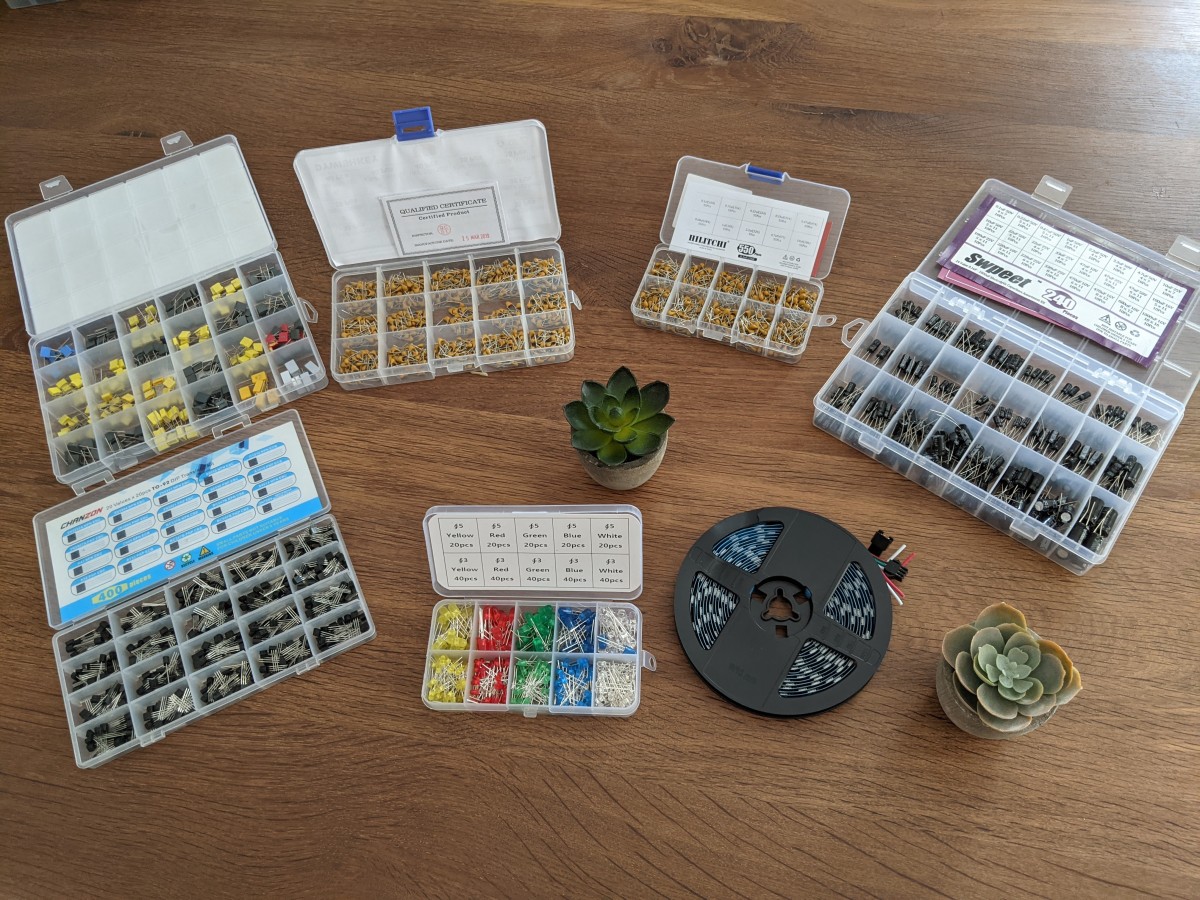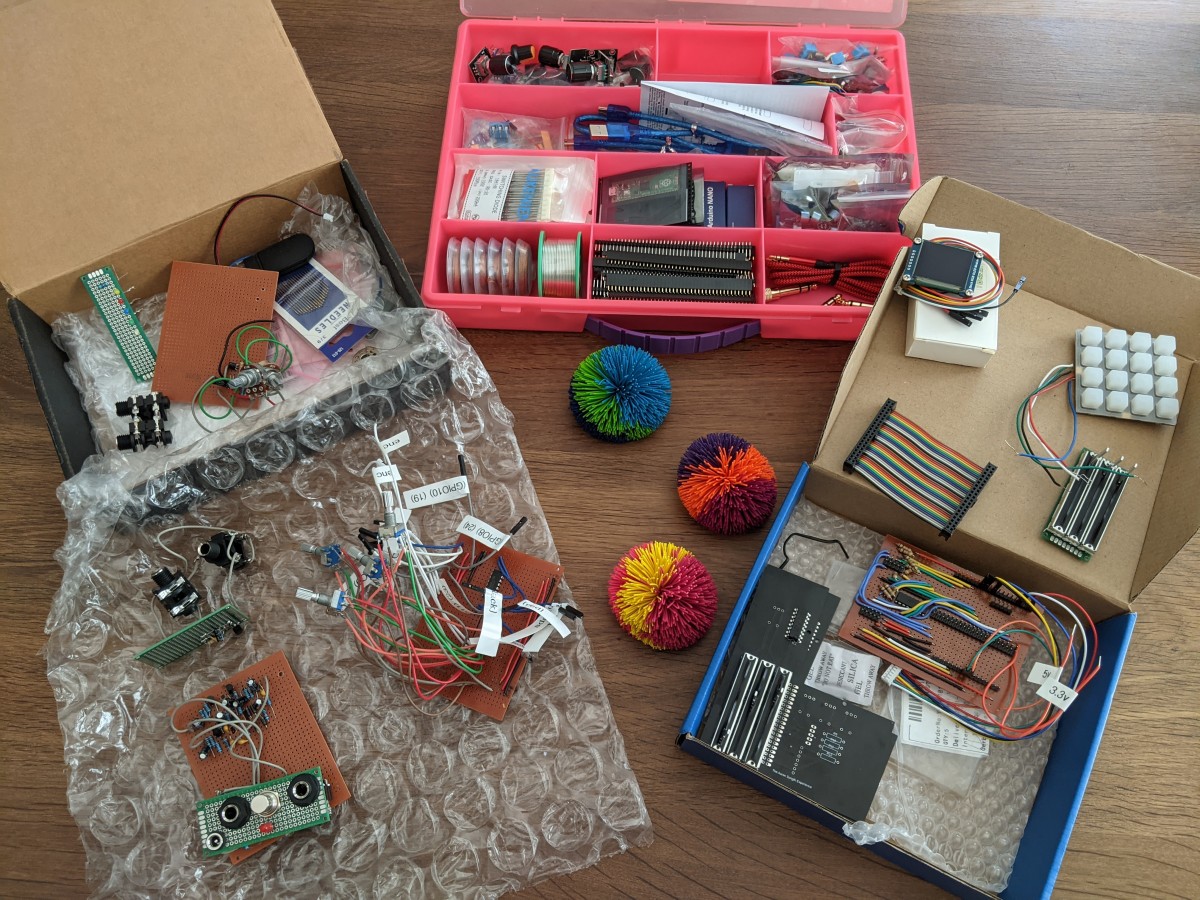means of production, scope, and an intimate look into what aarav owns
14 Jul 2021"So what does it take to run a synth company?"
I wish I knew. It was time for reorganization so I decided to simultaneously catalog. Here are the things I own associated with the synth project. Everything is traveling with me in a sedan at the moment so I think I've managed to document all of it.
We'll start with tools because those don't come up as often in posts where I'm talking about synths (and they determine your workflow and process, it's important to understand what you're working with!). Here you can see two soldering irons, two multimeters (I don't know how to use the analog one, I don't even know if it works), a crimping tool, a solder sucker, and a couple wire strippers/cutters. Also photographed are some wires (22 guage, jumper) and cables (10 and 40 connection ribbon, mono [aka TS] 3.5mm cables [aka eurorack patch cables], mono [aka TS] 6.35mm cables, stereo [aka TRS] 3.5mm cables [aka aux cables]).

While we're talking about all these audio cables, we may as well get to the jacks. This picture shows a lot of my hardware prototyping resources: a collection of breadboards, protoboard, and stripboard [aka veroboard], a 9v power supply and cables, a mini oscilloscope, some 6.35mm TRS and TS jacks, and a box of switches.

Now we've mostly got boxes of components, which I'll go through from least to most interesting. First, here are some resistors and potentiometers [aka variable resistors]. At the right are some trimmer potentiometers and resistor networks.

Similarly not too exciting: boxes of capacitors (multilayer ceramic, box film, and aluminum electrolytic), some transistors, and LEDs (including RGB strip).

Next are integrated circuit chips [aka ICs], which merit more discussion than they'll get here. I'll go over what these do and why I have them more in depth soon. For now: these chips contain electrical circuits inside of them; this allows engineers to leverage complex circuits with relative ease. Some of the most important ones here are clocks, operational amplifiers [aka opamps], low-voltage audio power amplifiers, hex schmitt-trigger inverters, analog multiplexers, ripple-carry binary counters, digital delays, and various logic gates/comparators.

Last up for components are a few boxes filled with stuff. On the left is a box of prototypes, mostly filled with pedal and synth circuitry. On the right is a cache with most of the latest up-to-date hardware for the project that isn't attached to the current prototype. In the back is a box of components.

Taking a closer look there, we can see (from top left to bottom right): a bunch of encoders; some I2C DAC and signal generator breakout boards; switches (some 3PDT, SPST, and SPDT); cables, manuals, misc; power sockets; diodes (rectifier = 1n400X; switching = 1n4148, 1n914; zener for various zener voltages); raspi picos and arduino nanos; 3.5mm TS and TRS jacks and condenser microphone pickups; some solder and desoldering wick; male and female header pins; and some 3.5mm to 6.35mm converter cables/jacks.

I'd also like to photograph the musical gear I've got with me (a couple sets of keys; a few guitars and accessories) and add those photos here. But for the most part, what's shown here is what I'm working with.
I code on a 2015 macbook pro that won't let me upgrade past OSX 10.12 and I took all these pictures with a Pixel 2 XL. Feel free to remind me if I own anything I'm forgetting!